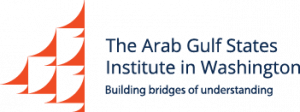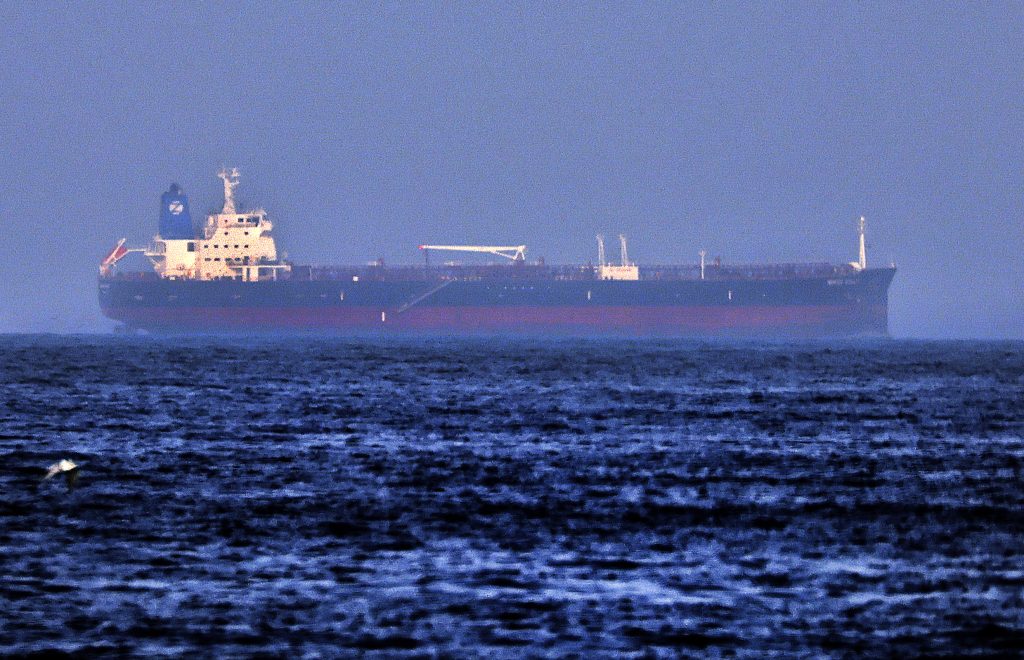
- 27 Jul 2021
Transitioning to Non-oil Economies in the Gulf: Successes, Failures, and the Path Forward
 |
 |
This event is organised by MEI Diffusion of Ideas-Gulf cluster, in collaboration with the Arab Gulf States Institute in Washington
Abstract
Economic diversification strategies to wean Gulf economies away from a dependence on hydrocarbon revenues have existed for decades. Ongoing state-led investments in strategic non-oil industries have produced varied results. Recent development initiatives involving culture, renewable energy, and technology-oriented industries appear promising; however, the return on investment is neither immediate nor guaranteed. Proceeds from the oil and gas sector continue to constitute the majority of public sector revenues in Gulf Arab states.
Are overlapping initiatives to develop non-oil industries in the region opportunities for cooperation or competition? With a steady rebound in oil prices since the oil price shocks of 2020, will oil- and gas-producing countries in the Gulf relax economic diversification efforts? Do protests in Oman signal a wider dissatisfaction with the fiscal adjustments implemented since 2020? What does this reveal about the rentier state theory and the nature of economic reform and development in the Gulf?
The Middle East Institute, in collaboration with the Arab Gulf States Institute in Washington (AGSIW), will host a panel to tackle these and other questions.
This public talk will be conducted online via Zoom on Tuesday, 27 July 2021, from 8.00pm to 9.30pm (Singapore Time). All are welcome to participate. This event is free, however, registration is compulsory. Successful registrants will receive a confirmation email with the Zoom details closer to the date of the event.
Photo by Malcolm Lightbody on Unsplash
Listen to the full event here:
Watch the full event here:
Read the Summary of Event Proceedings:
By Ilyas Salim
Research Assistant, Middle East Institute, National University of Singapore
Dr Kate Dourian
Non-resident Fellow at the Arab Gulf States Institute in Washington, Contributing Editor at the Middle East Economic Survey and Fellow at the Energy Institute
Dr Dourian provided her assessment of Saudi–UAE competition in light of the recent flare-up between the two states over oil production quotas during an OPEC+ meeting. In her opinion, peak demand has already been reached, or at least will happen sometime within the next two decades. Hence the current race to secure market share in what will be a shrinking energy market. As energy demand is projected to gradually plateau and decline, Gulf revenues may drop potentially up to 70 percent, meaning that states are now already looking to invest in new sources of energy.
While the recent Saudi–UAE disagreements are not irreconcilable, the rising tensions within OPEC do indicate how its members are moving in the same direction from different phases. The UAE, for instance, is leading the drive towards renewable energy and has become the first Arab country to include nuclear power into its energy mix. At the other end, Iraq is flaring nearly half the gas it produces (at substantial environmental cost) and has not made much headway in its solar programme. Gulf states are also competing rather than choosing co-operation in overlapping areas. Saudi Arabia, which is planning to invest a costly $110 billion in developing unconventional gas sector, only recently resolved a diplomatic break with Qatar, which has abundant gas reserves. Overall, these disparities highlight the lack of integration within the region, even as countries pursue similar goals of economic diversification.
Dr Dourian also discussed the various pathways adopted by national oil companies (NOCs). While oil and gas continue to account for around 70 to 90 percent of total Gulf export earnings, some Gulf countries are also energy importers. Dubai, for example, imports liquified natural gas (LNG) from Kuwait. There is perhaps a case to be made for the pooling of resources and redundancies to bring countries together and enhance energy security — as seen in the currently-developing East Mediterranean gas hub. While NOCs traditionally do not invest as much in research and development compared to international oil companies (IOCs), this may also be changing. Firms such as the Abu Dhabi National Oil Company (ADNOC) and Saudi’s Aramco, which have sold off some of their key assets to raise funds, now have to operate on a leaner structure and with greater transparency.
Dr Tilak Doshi
Visiting Senior Fellow, Middle East Institute, NUS
Gulf ambitions of economic diversification are certainly not new — they have been discussed in the region for decades. Yet the energy sector will remain lucrative for GCC and OPEC+ states particularly, as they look to increase market share as IOCs in the West continue to face pressure by governments and activist shareholders to reduce their oil and gas investments.
There are some alternative sectors in which the Gulf has comparative advantage. Renewable energy, for instance, has much potential given the abundant sand in the region that can be used to generate energy. However, Gulf ambitions in these sectors are often more hype than reality.
In terms of economic diversification, the megaprojects by countries such as KSA have sparked headlines but they are also high-risk endeavours likely to have cost overruns. There are however other less glamorous but no less vital measures of diversification, including improving ease of business, cutting red tape, creating a hospitable environment for private and foreign investments etc.
On this score, the UAE is far ahead of its Gulf neighbours, although Saudi Arabia too has made great advances. The collapse of oil prices from mid-2014 up until last year have also impressed upon Gulf NOCs the importance of fiscal prudence. Saudi Arabia’s Aramco, for example, recently put a halt to a $6 billion investment in the Port Arthur refinery for petrochemical plants.
Despite projections by BP suggesting a possible 80 percent decline in oil demand by 2050 under not-zero policies, Middle East countries remain unconvinced about the energy demand peak happening anytime soon, with the recent IEA roadmap for achieving net-zero admissions by 2050 being dismissed by KSA Oil Minister Prince Abdulaziz bin Salman as “la la land fiction”.
It is clear that oil and gas will remain vital for Gulf states, which will nevertheless continue to make appropriate investments to meet global demands for decarbonised commodities such as hydrogen and ammonia but only so long as the market is willing to pay for it.
Dr Robert Mogielnicki
Senior Resident Scholar at the Arab Gulf States Institute in Washington (AGSIW)
Dr Mogielnicki said that it is important to look at the Gulf’s economic standing today, in proper perspective. While the Gulf has thus far not seen a radical reshaping of its political economy, the region is, economically speaking, in a much better position than it was in 2020. Oil prices are currently hovering at around $70–75 per barrel, well ahead of the $45–50 per barrel figure that was expected by regional governments. There are also more optimistic growth expectations this year, with Saudi Arabia and the UAE anticipating to register around 4 percent growth.
Will the rebound in oil prices lead Gulf governments to slow down their economic diversification agendas? Dr Mogielnicki noted that Gulf diversification reforms were already patchy even before the Covid-19 pandemic and would likely continue in an uneven manner. Furthermore, the recovery of oil prices, which is taking place amid continued restrictions on many pre-Covid activities, may provide only temporary relief for countries that are still facing mounting economic challenges.
This is especially the case for Bahrain and Oman — whose underlying economic problems have been associated with political discontent — and are currently working with the International Monetary Fund in focusing on their midterm fiscal adjustment programmes. Both countries will be further affected by increased competition, as KSA embarks on an aggressive drive to boost its tourism sector.
At the moment, rising regional competition seems to be the prevailing mood in the Gulf, with the players driven by different national strategies and varying levels of resources. As Saudi Arabia and the UAE — the two regional powerhouses — both continue to pursue their own national development initiatives, a clash of interests is bound to occur in some areas. Saudi Arabia’s planned forays into both transportation and logistics — Riyadh plans to create a second national airline and also develop new economic zones in the region — will inevitably have repercussions for the economic activities of its Gulf neighbours.
Highlights from the Q&A Session
During the Q&A session, a key thread of discussion involved the Gulf countries’ capacity to balance their national energy strategies with newer drives to reduce carbon emissions. Saudi Arabia, for instance, proposes to reach its carbon-reduction ambitions not by prohibiting fossil fuels but by focusing on research into the removal of carbon and adopting the circular carbon economy concept.
Dr Doshi said that countries like KSA are ultimately in support of the circular carbon economy concept. While there are various technical and economic challenges involved in achieving a circular carbon economy, given projections of the energy industry’s future, it makes eminent sense for countries like Saudi Arabia, the UAE and other oil and gas producers to go as far as they can with respect to cutting down methane emissions, doing research and development and ensuring efficient use of existing fossil fuels — as long as they meet the required rates of return on the capital invested.
Dr Dourian also noted that given the developments in the energy sector — which includes stricter satellite monitoring and the European Union’s tightening of its emissions regulations — there is now more pressure on Gulf countries to step up their incorporation of green technology and alternative energy sources into their national programmes. There have been promising strides — Qatar Petroleum, for example, has dedicated billions of dollars towards incorporating carbon capture and utilisation (CCU) technology into its infrastructure, as it aims to reduce emissions and increase its LNG capacity from 77 million tons to 126 million tons per year. There is also much research and development being done by Gulf NOCs such as Aramco, on alternative energy sources like hydrogen.
However, Dr Dourian said that the cost of production for alternatives remains a significant hurdle. The cost of producing green hydrogen, for instance, needs to be reduced by 50 percent for it to be viable in a competitive energy market. She also noted that the Gulf countries’ position vis-a-vis a circular carbon economy is still in its early stages and there continues to be a lack of large-scale CCU projects in the region. Regionally, the percentage of renewables in the power sector remains one of the lowest in the world at 11.1 percent.
About the Speakers

Senior Resident Scholar, AGSIW
Dr Kate Dourian
Non-resident Fellow, AGSIW
Fellow, Energy Institute; Contributing Editor, Middle East Economic Survey
Dr Tilak Doshi
Visiting Senior Fellow, MEI (NUS)
Moderator: Dr Clemens Chay
Research Fellow
MEI (NUS)
Dr Robert Mogielnicki is a Senior Resident Scholar at the Arab Gulf States Institute in Washington (AGSIW). He manages the institute’s political economy research and leads “Next Gen Gulf” – a long-term research series that he created to examine technology trends in the Middle East.
He is currently serving as the Middle East and North Africa advisor with Freedom House for a year-long research project on Beijing’s global media and technology influence.
In the fall, he will teach a graduate seminar on China – Middle East Relations as an Adjunct Assistant Professor at Georgetown University’s Center for Contemporary Arab Studies (CCAS). Dr Mogielnicki previously worked as a human resource development consultant and in journalism across the Middle East and North Africa. He published his monograph, A Political Economy of Free Zones in Gulf Arab States, with Palgrave Macmillan’s international political economy series in April 2021.

Dr Kate Dourian is a Non-resident Fellow at the Arab Gulf States Institute in Washington, a Contributing Editor at the Middle East Economic Survey and a Fellow at the Energy Institute. Previously, she was the regional manager for the Middle East and Gulf states at the World Energy Council as well as the programme officer for the Middle East and North Africa in the global energy relations division of the International Energy Agency (IEA) since 2015. Her role included building relationships between the IEA and governments of several Middle East and North Africa countries, using the extensive contacts that she accumulated during the 30 years spent in several Middle Eastern and North African countries as a journalist and energy analyst.
Dr Dourian was actively involved in the discussions that led to Morocco becoming an IEA Association country and the joint work programme for which she raised funds from IEA members. She also helped write and edit the Middle East and North Africa sections of several IEA publications and contributed to the supply section of the Oil Market Report and is often consulted on matters of the Middle East by banks, financial institutions, and oil and gas companies.
She joined the IEA from the Middle East Economic Survey where she was a senior editor covering energy-related developments in the Middle East for the weekly from 2013-2015. From 2000-2013, Dourian was the editor in chief for the Middle East for oil price reporting agency Platts, now a division of S&P Global, based in Dubai. She has made many radio and television appearances discussing energy and geopolitics on a number of platforms in English, Arabic and French on BBC, CNN, Al Arabiya, CNBC and Al Jazeera English and has also been quoted extensively in several publications.

Dr Tilak Doshi is a Visiting Senior Fellow at the National University of Singapore’s Middle East Institute. His core area of expertise is the oil and gas sector. He has worked at multiple organisations: in the Institute of Southeast Asian Studies as a fellow and the head of the Energy Project, at Arthur D Little as the principal consultant for energy practice, at Saudi Aramco as a specialist for business analysis and corporate planning and for the crude oil sales and marketing department.
He was previously the chief economics and principal fellow at the Energy Studies Institute (NUS) and the programme director and senior research fellow at the King Abdullah Petroleum Studies and Research Centre (KAPSARC) in Riyadh. He was the managing consultant at Muse, Stancil & Co. (Asia), based in Singapore from 2016-2019. Dr Doshi received his PhD in Economics in 1992 from the University of Hawaii’s East-West Center and his MA and BA in Economics and History from the Victoria University of Wellington, New Zealand.

[Moderator] Dr Clemens Chay is a Research Fellow at the National University of Singapore’s Middle East Institute where he heads the Diffusion of Ideas-Gulf research cluster. His research focuses on the history and politics of the Gulf states, with a particular emphasis on Kuwait, Oman and Saudi Arabia. Prior to joining MEI, he was the Al-Sabah fellow at Durham University, where he taught at and completed his PhD as well.
His most recent academic publications include a chapter that examines Kuwait’s parliamentary politics in The Routledge Handbook of Persian Gulf Politics (2020) and another article appearing in the Journal of Arabian Studies titled The Dīwāniyya Tradition in Modern Kuwait: An Interlinked Space and Practice. His commentaries also feature across different outlets including ISPI, KFCRIS, and Cambridge MENAF.




